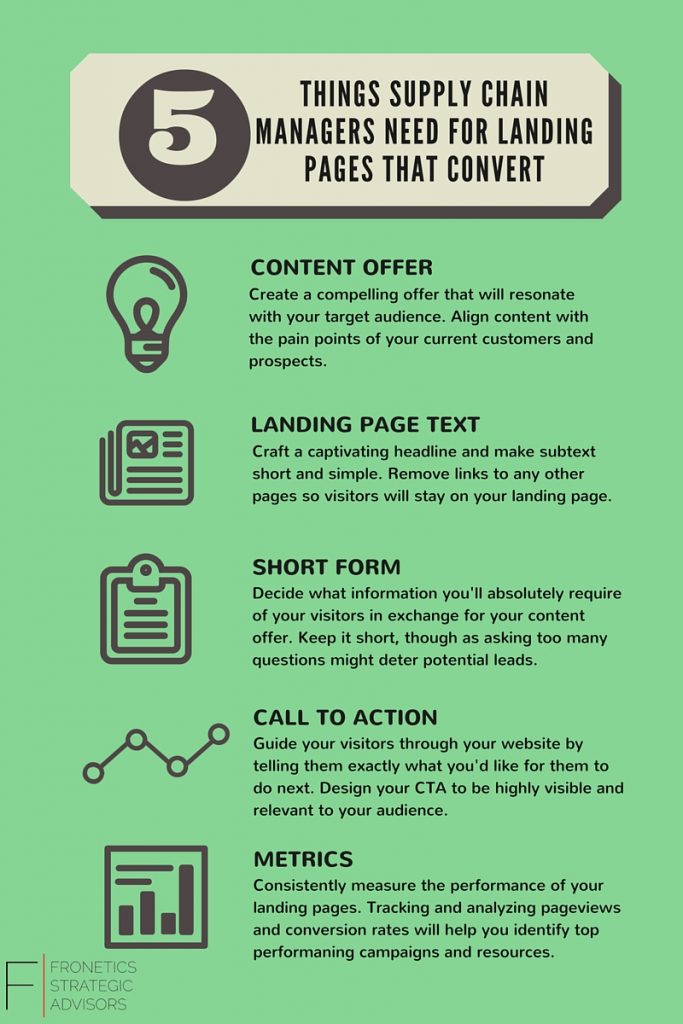
by Fronetics | Oct 7, 2015 | Blog, Marketing, Social Media, Strategy

I wrote previously about the opportunities companies within the logistics and supply chain industries can realize through social listening. I cautioned that to reap the benefits and seize the opportunities afforded by social media, companies need to use the information and intelligence gathered.
Using the information and intelligence gathered is essential. There is; however, another critical element: engagement. Engagement is a differentiator. Without engagement you are a lurker. You don’t want to be a lurker.
What is a lurker?
A lurker is someone who observes, but does not participate. If your company does not engage via established social media accounts, your company is lurking. Stop lurking. To realize the benefits of social media and social listening you need to actively engage with customers and others via social media.
What is active engagement?
How can your company actively engage with customers and other via social media? Here are some ideas:
- Ask questions
- Answer questions
- Provide clarification
- Weigh in on a discussion/topic
- Thank followers for their ideas, suggestions, and feedback
- Highlight when/how you have used customer feedback to make changes to a product or service
- Simply let people know you are listening to their comments and feedback.
Action
The information and intelligence your company can gather via social listening is immense. If you do not use what you have gathered you miss out on opportunities and revenue. The same can be said about social lurking. By not actively engaging via social media your company misses out on opportunities.
Social media can be a strategic tool – if used correctly.
This was originally published on Electronics Purchasing Strategies.

by Fronetics | Oct 6, 2015 | Blog, Marketing, Social Media, Strategy, Supply Chain

Companies within the logistics and supply chain industries have been slower to participate in social media than other industries. The primary reason being because of a lack of understanding of what social media is and the role it can play for business. Unfortunately, companies who do not participate in social media miss out on opportunities – and revenue.
Every day conversations are taking place about your company, your products and services, your industry, and your competitors. These conversations are not just happening over the water cooler, they are happening on social media. These conversations not only provide invaluable (and often strategic) information, they also serve to shape and define your company and your brand. With the advent of social media, the reality is that is the customer who drives your company’s image and brand message. If your company isn’t on social media you miss out.
Social listening
Social listening is the process of monitoring social media to identify and assess what is being said about a company, individual, brand, product, or service. Through social listening your company can not only become an innovation engine, you can also gain market intelligence, and you gain intelligence about how your company, products, and services are being perceived. Knowing this information in real-time is invaluable.
Caterpillar is one company that has embraced social listening. Caterpillar engages in social listening with the objectives of gaining deeper insight into:
- Who is talking about the company;
- What is being said about the company;
- What competitors are doing;
- Key influencers;
- The tone of conversations that are taking place.
Kevin Espinosa, Caterpillar’s eBusiness Loyalty Manager, further discusses the company’s social listening strategy and the benefits of social listening:
“If you haven’t started already, you have to start with social listening. It’s like building a large campus without the sidewalks. Let your audience lay down the paths and sidewalks they want to take. They’ll tell you where they’re participating and what they need. Then you can backfill with a strategy that addresses their needs. This is the push aspect of social media. Eventually, you get to the pull aspect, where the customer is a big contributor to your social media strategy. This is where there is truly two-way dialogue and relationship building.”
Engagement and action
To reap the benefits of social listening, including increasing your revenue, you need to use the information and intelligence gathered. For example, if you learn via social media that your customers are experiencing issues with a specific product, take steps to determine what the issues are, and then make changes to the product. The Aberdeen Group offers additional examples of how social listening has been and can be used: “companies can use the voice of the customer to make critical adjustments and find issues related to inventory allocation, order management, returns management, cost, overall service satisfaction and beyond.”
The opportunities the supply chain and logistics industries can realize through social listening are great. Not participating in social listening results in missed opportunities.
This post originally appeared on Electronics Purchasing Strategies.

by Fronetics | Oct 1, 2015 | Blog, Content Marketing, Marketing, Strategy

Around the time when the leaves start changing color every year, companies turn their focus to year-end revenue and gross profit forecasts. Those forecasts, in turn, are used to inform the establishment of sales and revenue targets for the following year. These goals can inspire your sales team to re-imagine internal processes to drive stellar results. Or, they can have a real demotivating effect on the team and organization.
Follow these four steps to create challenging but achievable goals that will lead you to better results, more consistent targeting, and a team that is motivated for the long run.
Evaluate
Look at the current state of your business and define your desired sales/revenue outcome based on this knowledge. Yes, this is much harder than saying, “my boss says to grow by 30%”, but the deep understanding of you current state will lead your organization stop focusing on the numbers to achieve and start focusing on the process of achievement. This is the hardest and most detailed step.
Segment
Once you have established the current state and desired outcome; break up these revenue/sales numbers and the process to get them into small portions. By doing this, you establish a pattern of smaller wins/process goal attainment. In the end, you will have developed a culture of winning and/or adjustment instead of an “all or nothing” mentality.
Structure
Now, build in a system that rewards superior behavior and discourages falling short. You will still have the over-achievers….they need to feel fairly treated for being better than average. You will have folks who fall short…they need redirection and course correction (maybe even managed out of the business). Remembering that since these are “small chunks” your team never gets too far behind before a correction can occur and your top performers are still treated as stars.
Adjust
Lastly, develop a culture of “adjustment”, both up and down. Most teams are used to a big target at the beginning of the year that never adjusts….you win or you lose….and so does your company. I think we all know the reality is that in the current economic environment, it’s not that simple. Having the ability to adjust as your “knowledge of the current state” becomes definite allows you to throttle up when you can and down when you have to.
One word of caution, if you try this approach you need to commit all the way. A half attempt at this would be disastrous. You need to commit to change in order to change your culture and to get the results that you want. One last thing, if you are now saying to yourself, “that’s all well and good, but my external stakeholders (lenders, principles, shareholders, managers, etc.) aren’t sympathetic to this type of curved lined forecasting”. I get that too. The answer is simple. Once have your current state defined and your desired outcomes articulated, take a conservative approach to this forecast and decide whether it is good enough for your external stakeholders. If it is, you have your worst case scenario that should only be affected by upside surprises. If it’s not, no hoping or praying for you to achieve your goals is going to make it any prettier in the long run. Make the strategic adjustments now and be better off at the end of the year.

by Fronetics | Sep 30, 2015 | Blog, Marketing, Social Media, Strategy, Supply Chain

The social economy is estimated to be $1.3 trillion U.S. dollars annually. Social media is more than a collection of personal commentary, photos, and inspirational quotes. Increasingly, social media creates an opportunity to gather information, and social media is becoming a useful tool for businesses to connect with other businesses and clients. Although Facebook is notorious for gathering information, social media companies are not the only companies who can gather intelligence.
Data Gathering
Gathering of intelligence has never been easier. Although there are still traditional indicators of sales and traditional feedback loops, the age of social media allows for swift collection of intelligence. According to McKinsey, “Analysts typically spend 80 percent of their time gathering information before they begin to analyze it. Social intelligence radically alters this process. Numerous tools allow analysts to create dynamic maps that pinpoint where information and expertise reside and to track new data in real time.”
Capturing the Consumer
Collecting information from your consumers online— the good, the bad, and the dirty— can help you understand consumer sentiment around brands. By searching for key words or terms you may improve sales strategies, product placement, or understand demand cycles.
Do you want to see what clients and consumers say about you and your products, about their reliance, frustration, appreciate of your role in the supply chain? You should! But you can also have a look at what is trending, what your competitors are doing, and how you can gain traction through social media. The window is a unique opportunity for you. If your competitors are garnering more views, figure out why. Do they highlight their employees? Do they link directly to items for purchase? Do they use keywords you’re not using? Are they presenting themselves as leaders in the industry by blogging?
Storm Surge
Storms happen, and they’re stronger than ever. Natural disasters will never cease. Accidents happen. There’s no fix-all, no cure for these things, but there are new ways to manage these challenging moments when they strike. In March 2012, the Red Cross announced the creation of a social media crisis monitoring center called the American Red Cross Digital Operations Center.
When Hurricane Sandy hit the Eastern Seaboard, the Red Cross was able to see how valuable social intelligence can be. According to an article in Fast Company, How the Red Cross Used Tweets to Save Lives During Hurricane Sandy, “During the week of Hurricane Sandy, the Red Cross tracked more than 2 million posts and responded to thousands of people. In the end, 88 social media posts directly affected response efforts—a fairly significant shift of resources.”
While people lost power during Hurricane Sandy, many still had internet access on their phones. They could access news updates, connect with loved ones, and ask for help through social media. According to the Pew Research Center’s Project for Excellence in Journalism, more than 20 million tweets were sent about Hurricane Sandy in the span of 6 days.
The intelligent thing to do for your company just might be to explore social media intelligence.
![5 Tips Supply Chain Managers Need to Build Landing Pages That Convert [Infographic]](https://www.fronetics.com/wp-content/uploads/2024/10/landing-pages-that-convert.jpg)
by Fronetics | Sep 28, 2015 | Blog, Logistics, Marketing, Supply Chain, Talent

Landing pages are a fundamental tool in converting website visitors into leads. They’re what convince your visitors that they absolutely must download your fabulous resource offer. Yet often times they’re treated as the annoying little sibling to high-value content pieces – tagging along almost as if an after-thought. In reality, landing pages have just as much, and possibly even more importance than the content offer. Besides, what good is your best resource if it’s landing page stinks?
Here are five tips supply chain managers need to build landing pages that are sure to convert visitors into leads.


by Fronetics | Sep 24, 2015 | Blog, Content Marketing, Marketing, Strategy

Outsourcing isn’t new to the business world. It goes back as far as the Industrial Revolution. Before then, it was common practice for businesses to perform all functions of product and service delivery, from product manufacturing through to product delivery. Sometime in the mid-1800s, independent architects, engineers, and legal professionals began to operate in larger U.S. cities taking on project-based work for a number of clients.
More than a hundred and fifty years later, outsourcing has become a staple business tool, offering benefits for employees and employers alike. Employers enjoy a reduction (or cost savings) in operating costs, improve their focus on core competencies, and employees are free to concentrate on their highest and best use.
With tech now advancing faster than ever, your business should be looking to leverage outsource partners to support your digital efforts.
Here are our picks for 6 digital and content marketing tasks you should consider outsourcing:
1. Strategy
A 2014 study of B2B marketers found that companies who have a documented content strategy in place are more likely to consider their efforts to be effective than companies who do not have a documented strategy in place (60 percent vs. 11 percent).
Identify an outsource partner that can deliver a content strategy that is aligned with your business goals and objectives and one that is results driven.
2. Content creation
Effective content is not only aligned with your business goals and objectives, it is also quality content. Finding an outsource partner that excels at content creation drive profitable customer action. When it comes to finding the right outsource partner, put a premium on quality content, and remember the adage: you get what you pay for.
3. Social media
It’s important to recognize social media as the important business tool it is. As such, you should draw on the expertise of a social media outsourcing partner. These firms know what works and what doesn’t because they’re active every day on multiple platforms managing accounts for multiple clients. And it’s not just posting every now and then. A good social media partner will craft and publish great original content, but they’ll also curate great content from relevant sources, like industry partners. Outsourcing these tasks to the pros helps build a strong following and brand awareness for your company.
4. Web development and design
Because your company’s website is the primary digital tool of communication with customers and prospects, it literally pays to have web design and development functions performed by a knowledgeable professional. Hosting that capability in-house can be costly, though. Besides saving you thousands on employee compensation, outsource partners can often bring with them niche specialties, for instance, something like usability engineering isn’t something you would necessarily get from an in-house generalist.
5. eCommerce
Focus on your core product offerings rather than investing time, money, and resources into building and maintaining an eCommerce platform. Because it receives and stores sensitive information, eCommerce platforms need to be constantly updated and secured. Couple that with product line changes, future business growth, and changing platform needs, and it quickly becomes a full-time job that comes with a hefty in-house expense.
6. Projects that are outside your scope of expertise
It’s possible that projects will come up that require a skill set, like graphic design, which lies outside your company’s range of expertise. It’s far better to find a partner with this expertise rather than try to create an on-demand capacity to provide the service. Your clients will benefit from stellar work performed by a knowledgeable practitioner and you’ll enjoy cost savings by not committing to a long-term employee salary.
You may also like:
When it comes to marketing we work with our clients to create and execute strategies that drive success and elevate their brand position within the industry. Unlike other firms, we align marketing programs with business objectives and, through a data driven approach, are able to deliver results with a targeted ROI. Our team is comprised of strategists, marketing professionals, writers, designers, and experts in social media. Together we leverage our experience to increase brand awareness, position our clients as thought leaders, drive meaningful engagement with prospects and customers, and help businesses grow.






![5 Tips Supply Chain Managers Need to Build Landing Pages That Convert [Infographic]](https://www.fronetics.com/wp-content/uploads/2024/10/landing-pages-that-convert.jpg)

